Best Paleo Backpacking Meals for Outdoor Adventures
What readers will learn about Paleo Backpacking Meals:
- The benefits of incorporating the paleo diet into backpacking meals, including improved energy levels, better nutrient intake, and enhanced recovery.
- How to plan and prepare for paleo backpacking meals, including researching and selecting lightweight, non-perishable food options, calculating calorie needs, and creating a detailed meal plan.
- Tips for pre-trip meal preparation, cooking on the trail, and ideas for paleo breakfasts, lunches, dinners, and snacks.
Are you a fan of the paleo diet and love going on outdoor adventures like backpacking? If so, this ultimate guide to paleo backpacking meals is perfect for you.
The paleo diet, known for its emphasis on consuming whole, unprocessed foods, can be easily adapted to provide nourishing and energy-packed meals for your backpacking trips.

6 Paleo Meal Ideas Suitable For Camping
-
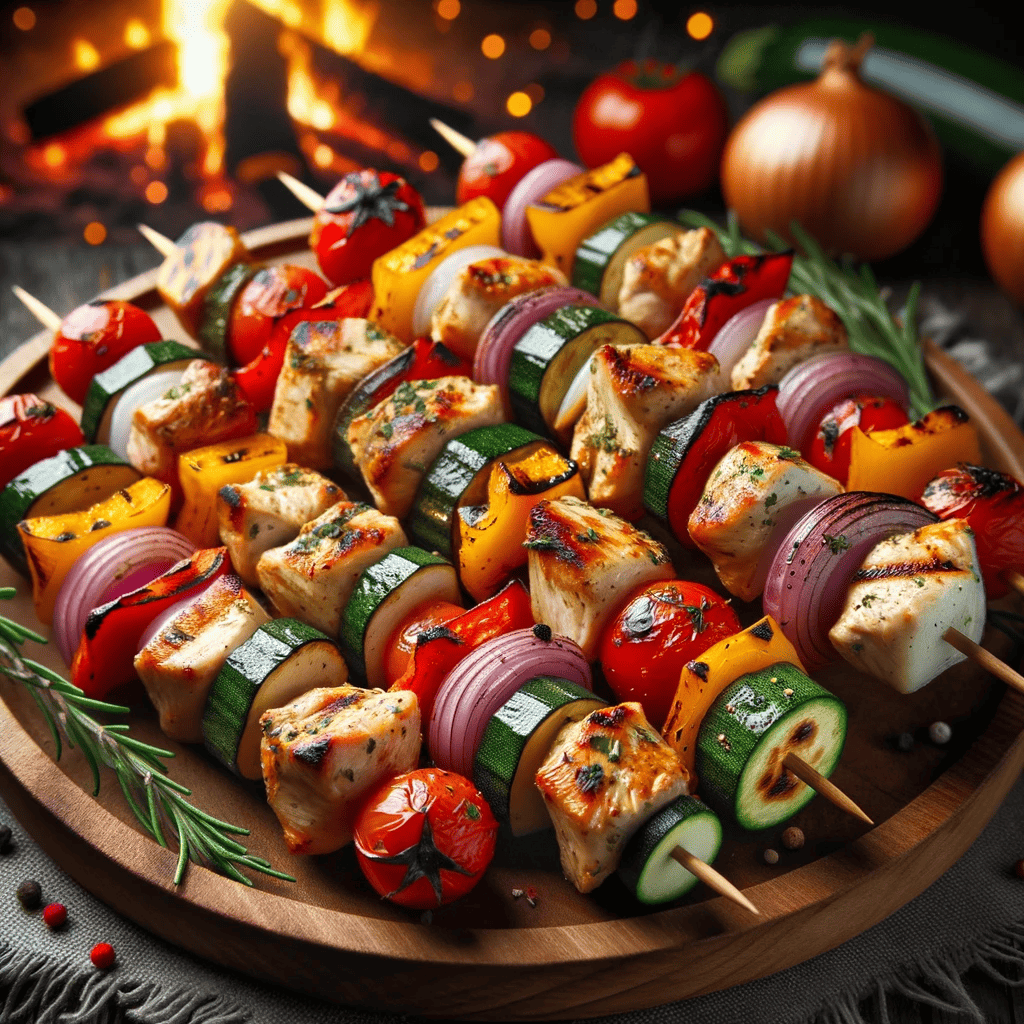
Grilled Skewers Grilled Skewers:
- Ingredients: Cubed chicken or beef, bell peppers, onions, zucchini, cherry tomatoes, olive oil, lemon juice, garlic, herbs (like rosemary or thyme), salt, and pepper.
- Preparation: Marinate the meat in olive oil, lemon juice, garlic, herbs, salt, and pepper. Skewer the meat and vegetables alternately. Grill over an open flame until cooked through.
-
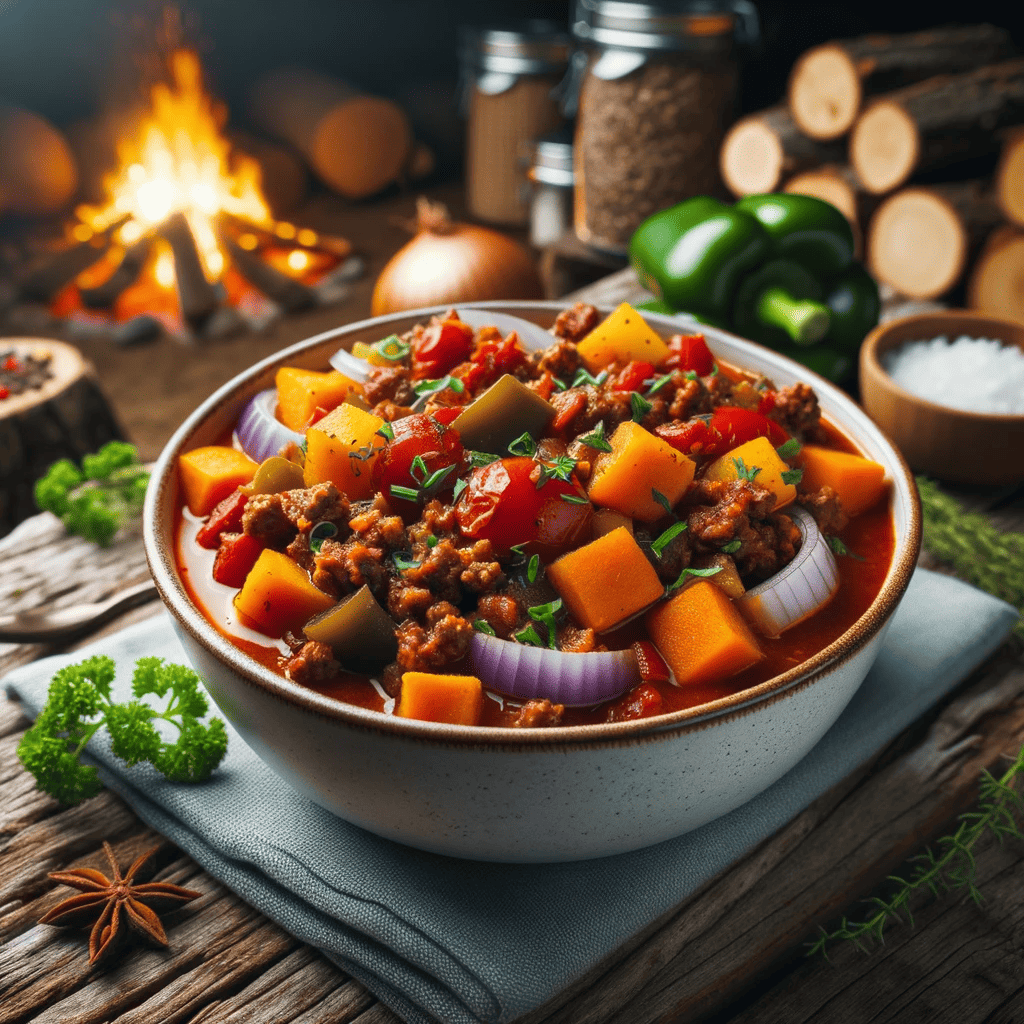
Paleo Chili Paleo Chili:
- Ingredients: Ground beef or turkey, diced tomatoes, bell peppers, onions, garlic, chili powder, cumin, paprika, salt, and pepper. You can also add in some diced sweet potatoes for added nutrition.
- Preparation: In a pot or Dutch oven, cook the meat until browned. Add in the rest of the ingredients and let it simmer over the fire until flavors meld together.
-
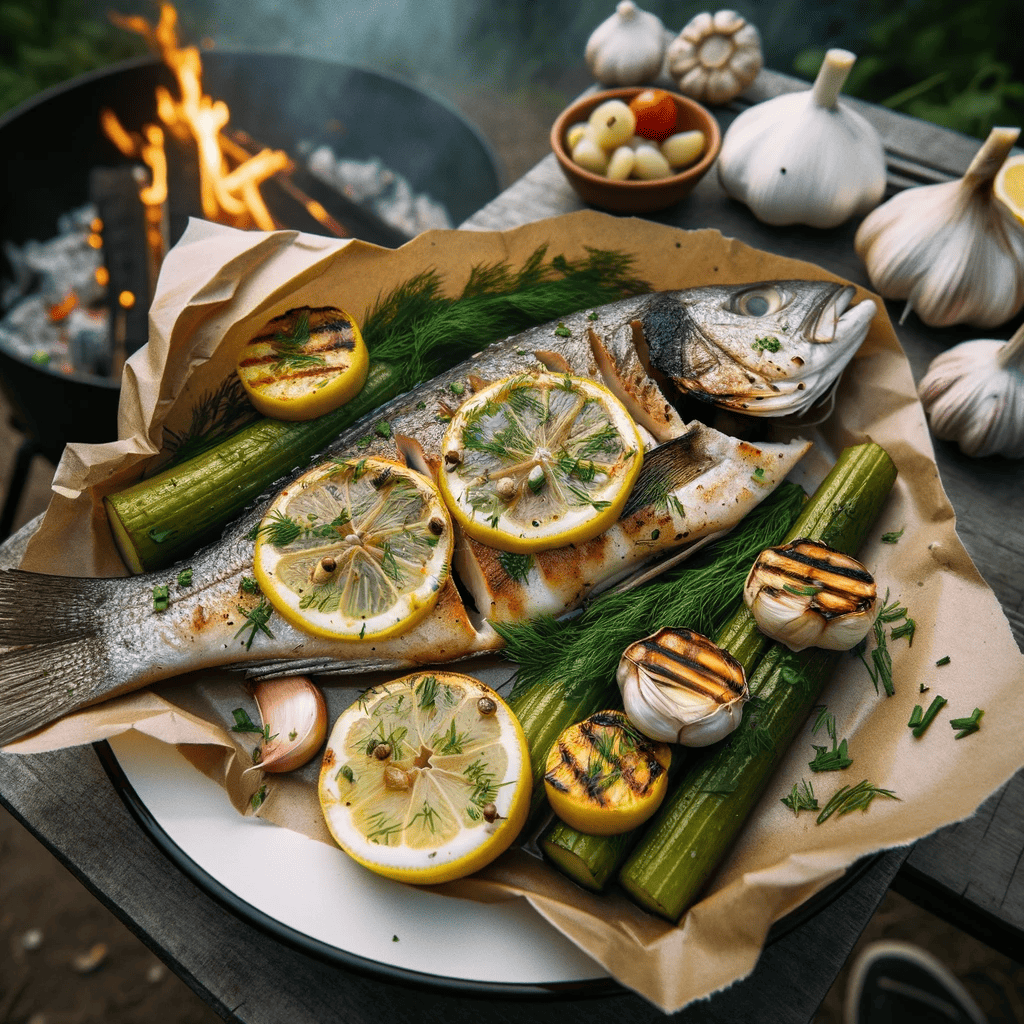
Grilled fish packets Grilled Fish Packets:
- Ingredients: Fish fillets (like salmon or trout), lemon slices, fresh dill or parsley, garlic, olive oil, salt, and pepper.
- Preparation: Place the fish fillet on a piece of aluminum foil. Top with lemon slices, herbs, garlic, a drizzle of olive oil, salt, and pepper. Fold the foil into a packet and grill over the campfire until the fish is cooked through.
-
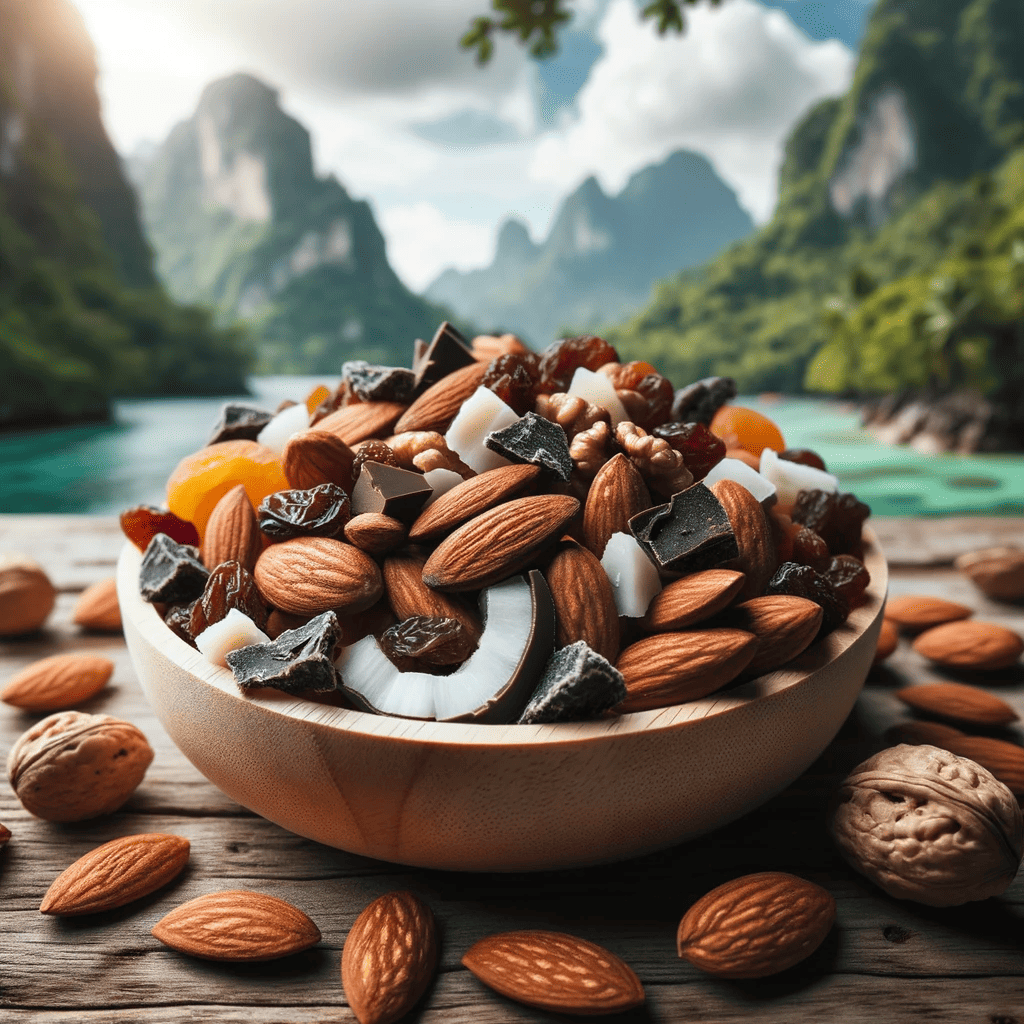
Paleo Trail Mix Paleo Trail Mix:
- Ingredients: Nuts (like almonds, walnuts, and cashews), seeds (like pumpkin and sunflower), unsweetened dried fruits (like raisins, apricots, and coconut flakes), and optionally, dark chocolate chunks.
- Preparation: Mix all the ingredients together and store in a zip-lock bag. A great snack for on-the-go!
-
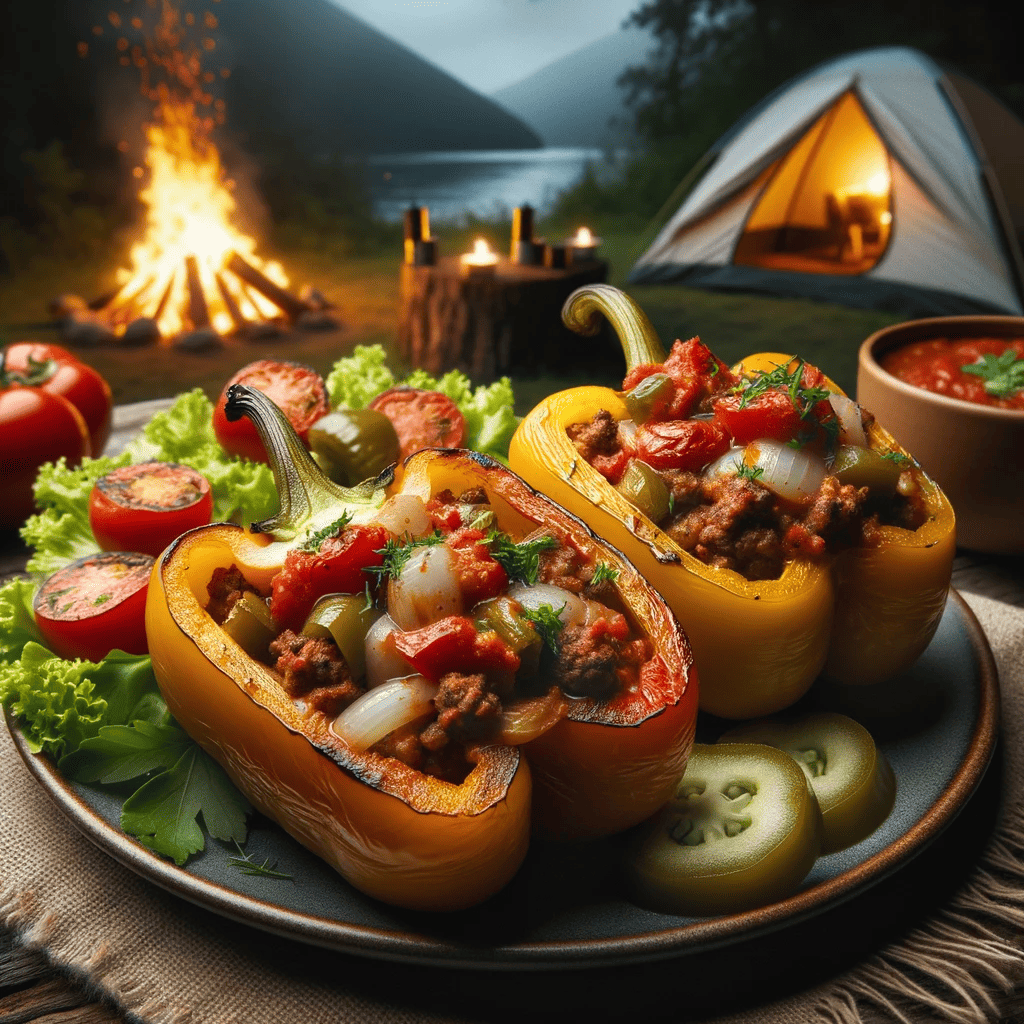
Stuffed Bell Peppers Stuffed Bell Peppers:
- Ingredients: Bell peppers, ground meat (chicken, beef, or turkey), diced tomatoes, onions, garlic, cumin, paprika, salt, and pepper.
- Preparation: Cut the tops off the bell peppers and remove the seeds. In a separate bowl, mix the meat, tomatoes, onions, garlic, and spices. Stuff the bell peppers with the mixture and wrap them in aluminum foil. Cook them over the campfire until the meat is fully cooked and the peppers are tender.
-
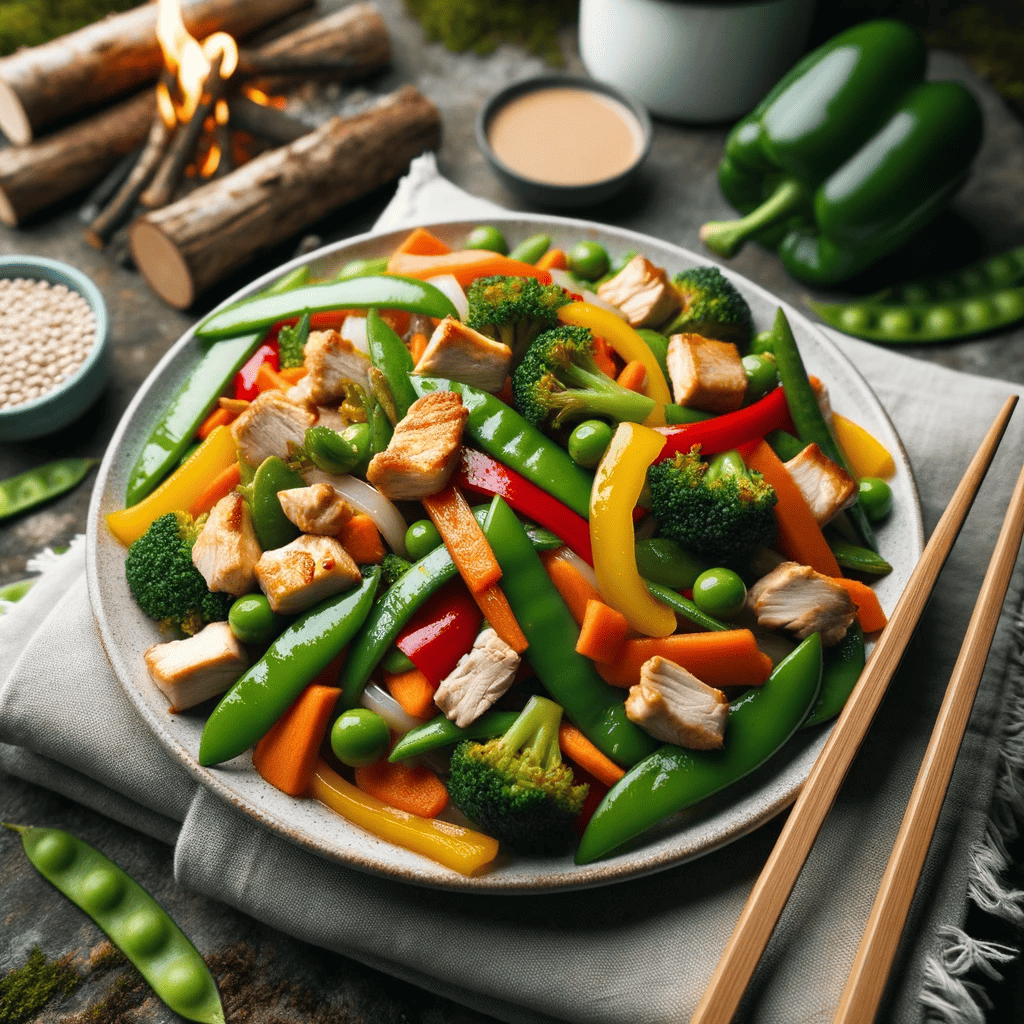
Vegetable Stir-Fry Vegetable Stir-Fry:
- Ingredients: Mixed vegetables (like bell peppers, broccoli, snap peas, and carrots), chicken or beef strips, coconut oil, garlic, ginger, and tamari or coconut aminos for flavor.
- Preparation: In a pan or wok, heat the coconut oil. Add the garlic and ginger, followed by the meat. Once the meat is cooked, add the vegetables and stir-fry until tender. Add tamari or coconut aminos for flavor.
Benefits of Paleo Backpacking Meals
Incorporating the principles of the paleo diet into your backpacking meals offers several advantages.
First and foremost, paleo meals provide sustained energy levels that are crucial for long hikes.
By avoiding processed foods and focusing on whole, unprocessed ingredients, you can steer clear of energy crashes and maintain stable energy throughout your outdoor adventures.
Another significant benefit of paleo backpacking meals is better nutrient intake. The paleo diet encourages the consumption of fruits, vegetables, lean proteins, and healthy fats, all of which are rich in essential nutrients.
These nutrient-dense foods support physical performance, aid in muscle recovery, and keep your immune system strong while exploring the great outdoors.
In addition to the physical benefits, paleo backpacking meals can also enhance your overall well-being. By fueling your body with clean, whole foods, you provide it with the necessary nutrients to function at its best.
This can lead to improved mood, mental clarity, and a general sense of well-being, all of which are crucial during outdoor adventures.

Planning and Preparation
Before embarking on your backpacking trip, it’s important to plan and prepare your paleo meals carefully. Here are some steps to follow:
- Research and Select Paleo Food Options: Begin by researching and selecting lightweight, non-perishable paleo-friendly food options suitable for backpacking.
- Consider factors such as weight, shelf life, and nutritional content. Look for dehydrated or freeze-dried meals and paleo-friendly snacks that are easy to carry and require minimal preparation.
- Calculate Calorie Needs: Determine your calorie needs based on the duration and intensity of your hike. This ensures you consume enough energy to sustain your activities. Online calculators can help you estimate your calorie requirements effectively.
- Make a Detailed Meal Plan: Plan your meals for each day of your backpacking trip, including breakfast, lunch, dinner, and snacks. Focus on achieving a balance of macronutrients (protein, carbohydrates, and fats) and include a variety of foods to keep your meals interesting. Take into account any dietary restrictions or preferences you may have.
- Create a Shopping List: Once you have your meal plan, make a shopping list of all the paleo-friendly ingredients you’ll need. This ensures you have everything you need before setting out on your trip. Don’t forget to include any necessary cooking equipment, such as a lightweight stove, pot, and utensils.

Pre-Trip Meal Preparation
To make your backpacking meals more convenient, consider preparing dehydrated or freeze-dried meals at home.
This saves time on the trail and reduces the weight and bulk of your food. Here’s how you can do it:
- Prepare Dehydrated or Freeze-Dried Meals: Select your favorite paleo-friendly ingredients and dehydrate or freeze-dry them at home. You can use a dehydrator or an oven set to a low temperature. By removing moisture from the food, you significantly reduce its weight and make it easier to carry.
- Package Individual Meals: Once your ingredients are dehydrated or freeze-dried, package them in lightweight, airtight containers or resealable bags. Label each container with cooking instructions and nutritional information. This makes it easier to prepare your meals on the trail.
| Pre-Trip Meal Preparation | Cooking on the Trail |
|---|---|
| Research and Select Paleo Food Options | Choose Lightweight Cooking Equipment |
| Calculate Calorie Needs | Using Portable Stoves or Campfires |
| Make a Detailed Meal Plan | Conserving Fuel |
| Create a Shopping List | Safe Food Handling and Water Purification |
| Prepare Dehydrated or Freeze-Dried Meals | |
| Package Individual Meals |

Cooking on the Trail
When it comes to cooking your paleo backpacking meals on the trail, there are a few important considerations to keep in mind. Here’s what you need to know:
- Choose Lightweight Cooking Equipment: Look for lightweight cooking equipment suitable for backpacking. Options include compact stoves, lightweight pots and pans, and collapsible utensils. These allow you to cook meals efficiently without adding unnecessary weight to your backpack.
- Using Portable Stoves or Campfires: Portable stoves are popular choices for backpackers because they are lightweight and easy to use. Follow the manufacturer’s instructions for setting up and using your stove safely. If you prefer cooking over a campfire, check local regulations and guidelines for fire safety. Always practice Leave No Trace principles and use existing fire rings when available.
- Conserving Fuel: Fuel can be limited when backpacking, so it’s important to conserve it as much as possible. Plan your meals and cooking times accordingly to minimize fuel usage. Consider using natural resources such as fallen branches or twigs as fuel for your stove. Follow fire safety guidelines and avoid damaging the environment.
- Safe Food Handling and Water Purification: Proper food handling is crucial to prevent foodborne illnesses while on the trail. Wash your hands thoroughly before handling food and use separate cutting boards and utensils for raw and cooked foods. Practice proper water purification techniques to ensure the water you use for cooking and drinking is safe. Options include using water filters, purifying tablets, or boiling water for at least one minute.
Breakfast Ideas
A nutritious breakfast is essential to start your day off right while backpacking. Here are a few quick and easy paleo breakfast ideas to fuel your adventures:
- Paleo Banana Pancakes: Mash a ripe banana and mix it with eggs, almond flour, and a pinch of cinnamon. Cook the batter in a non-stick pan over your camp stove until golden brown.
- Egg Muffins: Whisk together eggs, diced vegetables, and cooked bacon or sausage. Pour the mixture into a muffin tin and bake at home before your trip. Reheat the muffins on the trail for a protein-packed breakfast.
- Chia Pudding: Mix chia seeds with coconut milk and a sweetener of your choice. Let it sit overnight to thicken. In the morning, top it with fresh berries and nuts for a filling and nutritious breakfast.
Lunch and Dinner Ideas
For lunch and dinner on the trail, choose lightweight and nutrient-dense options. Here are a few ideas for paleo lunches and dinners:
- Dehydrated Vegetable and Beef Stir-Fry: Dehydrate sliced vegetables and cooked beef at home. On the trail, rehydrate the ingredients in hot water and stir-fry them in a small amount of oil or ghee. Season with herbs and spices for added flavor.
- Zucchini Noodles with Pesto: Spiralize zucchini at home and pack it in a resealable bag. On the trail, rehydrate the zucchini noodles in hot water for a few minutes. Mix in a homemade paleo pesto sauce and top with cooked shrimp or chicken.
- Chicken and Vegetable Foil Packets: Prepare individual foil packets with diced chicken, sliced vegetables, and a drizzle of olive oil. Seal the packets tightly and cook them over a campfire or on your camp stove until the chicken is cooked through and the vegetables are tender.
Snack Ideas
Snacks are an important part of any backpacking trip, providing quick bursts of energy and keeping you fueled between meals. Here are some paleo snack ideas to keep you energized:
- Homemade Energy Bars: Make your own energy bars using a combination of nuts, seeds, dried fruit, and honey or maple syrup. These bars are easy to pack and provide a good balance of protein, healthy fats, and carbohydrates.
- Dried Fruit and Nut Mix: Create your own trail mix by combining dried fruits and a variety of nuts. This snack is lightweight, portable, and provides a good mix of nutrients and flavors.
- Jerky: Look for paleo-friendly jerky made from high-quality, lean meats. Jerky is a great source of protein and can be easily carried in your backpack for a quick and satisfying snack.
Case Study: Sarah’s Paleo Backpacking Adventure
Sarah, an avid hiker and follower of the paleo diet, was planning a week-long backpacking trip in the mountains.
She knew that proper nutrition was essential for her energy levels and overall well-being during the adventure.
Sarah decided to apply her paleo principles to her backpacking meals to ensure she had the nourishment she needed.
In the planning and preparation phase, Sarah researched lightweight, non-perishable paleo food options that were suitable for backpacking.
She opted for dehydrated meals made with whole, unprocessed ingredients like lean meats, vegetables, and healthy fats.
Sarah calculated her calorie needs based on the duration and intensity of the hike, ensuring she had enough fuel to sustain her through the challenging trails.
Sarah made a detailed meal plan, including breakfast, lunch, dinner, and snacks. For breakfast, she packed dehydrated egg and vegetable scrambles, which provided a protein-packed start to her day.
For lunch and dinner, Sarah prepared dehydrated beef and vegetable stews, ensuring she had a balanced mix of macronutrients.
She also packed homemade energy bars made with nuts, seeds, and dried fruit for quick and nutritious snacks throughout the day.
On the trail, Sarah used a lightweight camping stove to cook her paleo meals. She followed safe food handling practices and used proper water purification techniques to ensure her meals were safe to eat.
Sarah found that her paleo backpacking meals not only provided sustained energy but also tasted delicious and satisfying, making her outdoor adventure even more enjoyable.
Sarah’s experience highlighted the benefits of incorporating the paleo diet into backpacking meals.
She felt energized throughout her hike and noticed improved recovery after long days on the trail.
Sarah’s successful paleo backpacking adventure inspired her to share her experiences with the backpacking community, encouraging others to explore the benefits of paleo-friendly meals while enjoying the great outdoors.
Conclusion
With proper planning and preparation, following a paleo diet while backpacking can be a rewarding and nourishing experience.
By incorporating whole, unprocessed foods into your meals, you can fuel your body with the nutrients it needs for optimal performance and well-being during your outdoor adventures.
So, pack your backpack, lace up your hiking boots, and embark on your next paleo backpacking journey with confidence!
Common Questions
Who can benefit from paleo backpacking meals?
Outdoor enthusiasts following a paleo diet can benefit.
What are paleo backpacking meals?
Nutrient-dense meals made with natural ingredients for outdoor adventures.
How can I prepare paleo backpacking meals?
Pre-pack and dehydrate ingredients to make lightweight and portable meals.
What if I can’t find paleo-friendly ingredients?
Substitute with similar ingredients that align with the paleo diet.
How do I ensure I get enough energy while backpacking?
Include high-fat foods like nuts and seeds in your paleo meals.
What if I don’t have access to cooking equipment?
Opt for no-cook paleo backpacking meals that require minimal preparation.
Generated By ArticleFiesta.com
Note there is no watermark for paid members of the best AI content creation tool.




